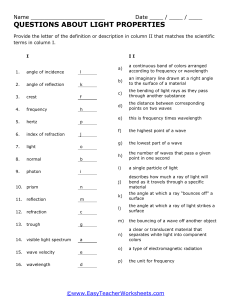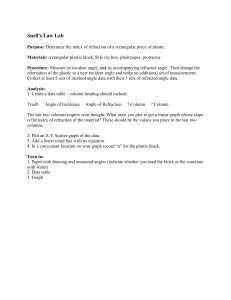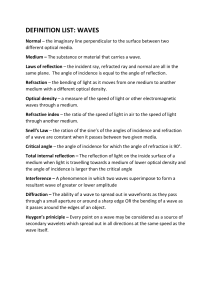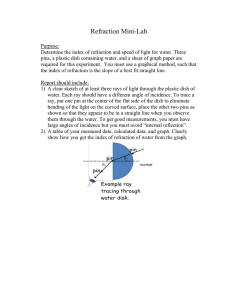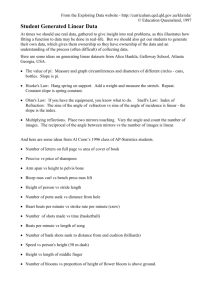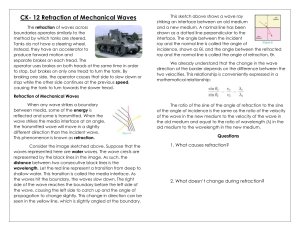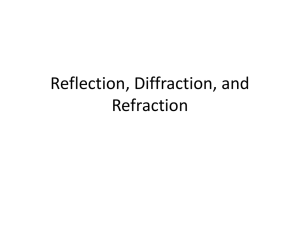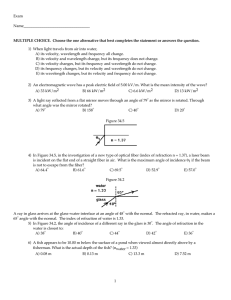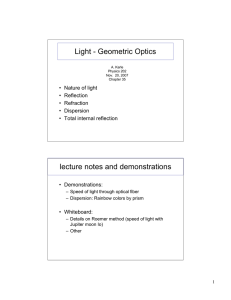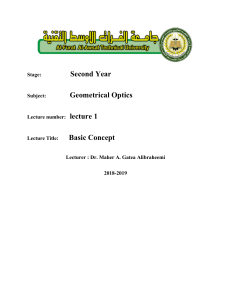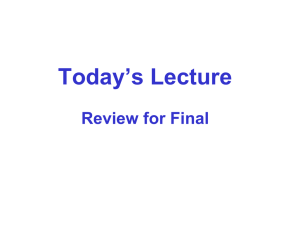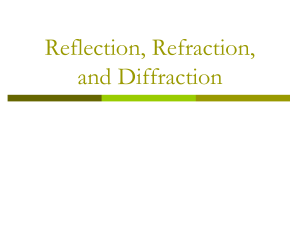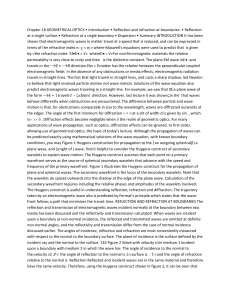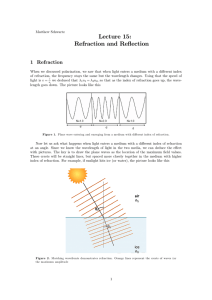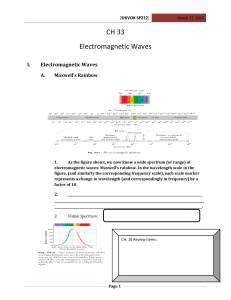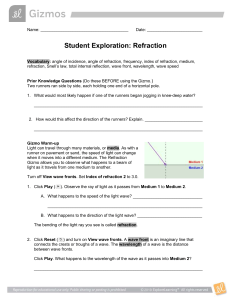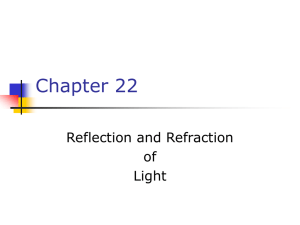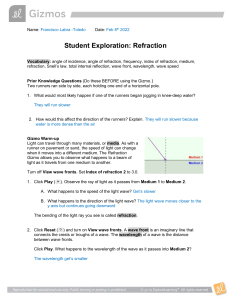PHY 1033 Fall 2011 Exam #1 In class (1 hr. 40 min. ending 4:40 pm) Ihas Sept. 20
advertisement
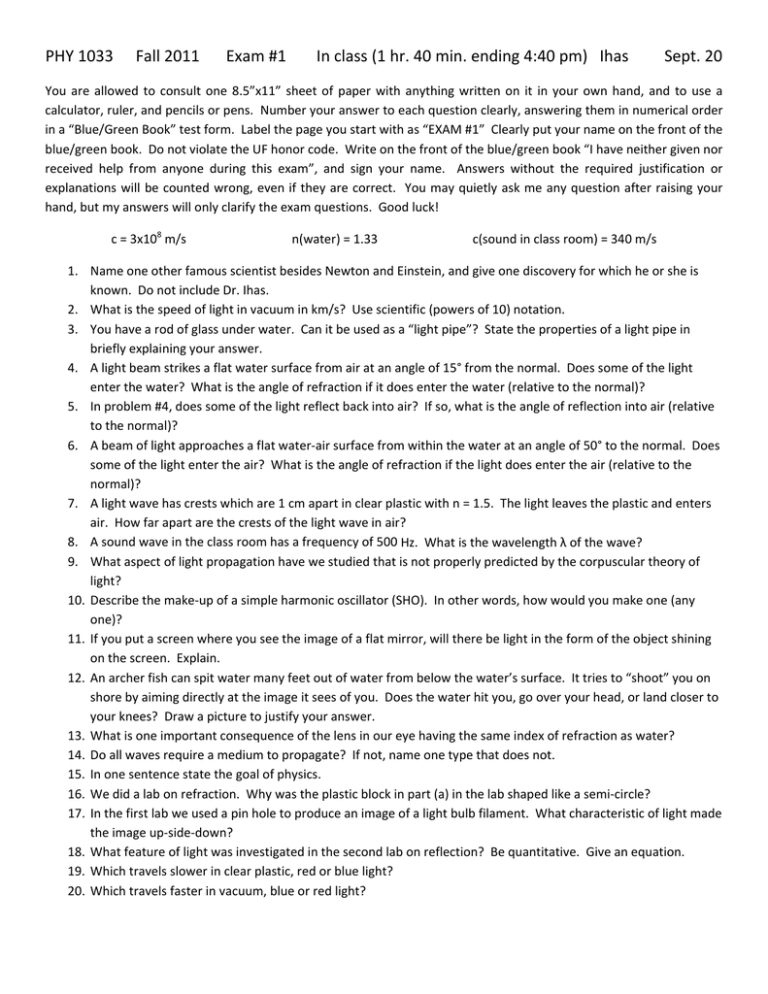
PHY 1033 Fall 2011 Exam #1 In class (1 hr. 40 min. ending 4:40 pm) Ihas Sept. 20 You are allowed to consult one 8.5”x11” sheet of paper with anything written on it in your own hand, and to use a calculator, ruler, and pencils or pens. Number your answer to each question clearly, answering them in numerical order in a “Blue/Green Book” test form. Label the page you start with as “EXAM #1” Clearly put your name on the front of the blue/green book. Do not violate the UF honor code. Write on the front of the blue/green book “I have neither given nor received help from anyone during this exam”, and sign your name. Answers without the required justification or explanations will be counted wrong, even if they are correct. You may quietly ask me any question after raising your hand, but my answers will only clarify the exam questions. Good luck! c = 3x108 m/s n(water) = 1.33 c(sound in class room) = 340 m/s 1. Name one other famous scientist besides Newton and Einstein, and give one discovery for which he or she is known. Do not include Dr. Ihas. 2. What is the speed of light in vacuum in km/s? Use scientific (powers of 10) notation. 3. You have a rod of glass under water. Can it be used as a “light pipe”? State the properties of a light pipe in briefly explaining your answer. 4. A light beam strikes a flat water surface from air at an angle of 15° from the normal. Does some of the light enter the water? What is the angle of refraction if it does enter the water (relative to the normal)? 5. In problem #4, does some of the light reflect back into air? If so, what is the angle of reflection into air (relative to the normal)? 6. A beam of light approaches a flat water‐air surface from within the water at an angle of 50° to the normal. Does some of the light enter the air? What is the angle of refraction if the light does enter the air (relative to the normal)? 7. A light wave has crests which are 1 cm apart in clear plastic with n = 1.5. The light leaves the plastic and enters air. How far apart are the crests of the light wave in air? 8. A sound wave in the class room has a frequency of 500 Hz. What is the wavelength λ of the wave? 9. What aspect of light propagation have we studied that is not properly predicted by the corpuscular theory of light? 10. Describe the make‐up of a simple harmonic oscillator (SHO). In other words, how would you make one (any one)? 11. If you put a screen where you see the image of a flat mirror, will there be light in the form of the object shining on the screen. Explain. 12. An archer fish can spit water many feet out of water from below the water’s surface. It tries to “shoot” you on shore by aiming directly at the image it sees of you. Does the water hit you, go over your head, or land closer to your knees? Draw a picture to justify your answer. 13. What is one important consequence of the lens in our eye having the same index of refraction as water? 14. Do all waves require a medium to propagate? If not, name one type that does not. 15. In one sentence state the goal of physics. 16. We did a lab on refraction. Why was the plastic block in part (a) in the lab shaped like a semi‐circle? 17. In the first lab we used a pin hole to produce an image of a light bulb filament. What characteristic of light made the image up‐side‐down? 18. What feature of light was investigated in the second lab on reflection? Be quantitative. Give an equation. 19. Which travels slower in clear plastic, red or blue light? 20. Which travels faster in vacuum, blue or red light?
